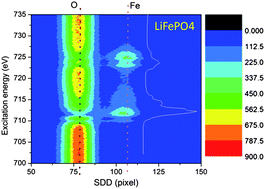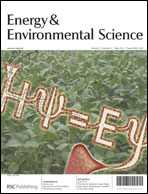LiFePO4 has been a promising cathode material for rechargeable lithium ion batteries. Different secondary or impurity phases, forming during either synthesis or subsequent redox process under normal operating conditions, can have a significant impact on the performance of the electrode. The exploration of the electronic and chemical structures of impurity phases is crucial to understand such influence. We have embarked on a series of synchrotron-based X-ray absorption near-edge structure (XANES) spectroscopy studies for the element speciation in various impurity phase materials relevant to LiFePO4 for Li ion batteries. In the present report, soft-X-ray XANES spectra of Li K-edge, P L2,3-edge, O K-edge and Fe L2,3-edge have been obtained for LiFePO4 in crystalline, disordered and amorphous forms and some possible “impurities”, including LiPO3, Li4P2O7, Li3PO4, Fe3(PO4)2, FePO4, and Fe2O3. The results indicate that each element from different pure reference compounds exhibits unique spectral features in terms of energy position, shape and intensity of the resonances in its XANES. In addition, inverse partial fluorescence yield (IPFY) reveals the surface vs. bulk property of the specimens. Therefore, the spectral data provided here can be used as standards in the future for phase composition analysis.


 Please wait while we load your content...
Please wait while we load your content...